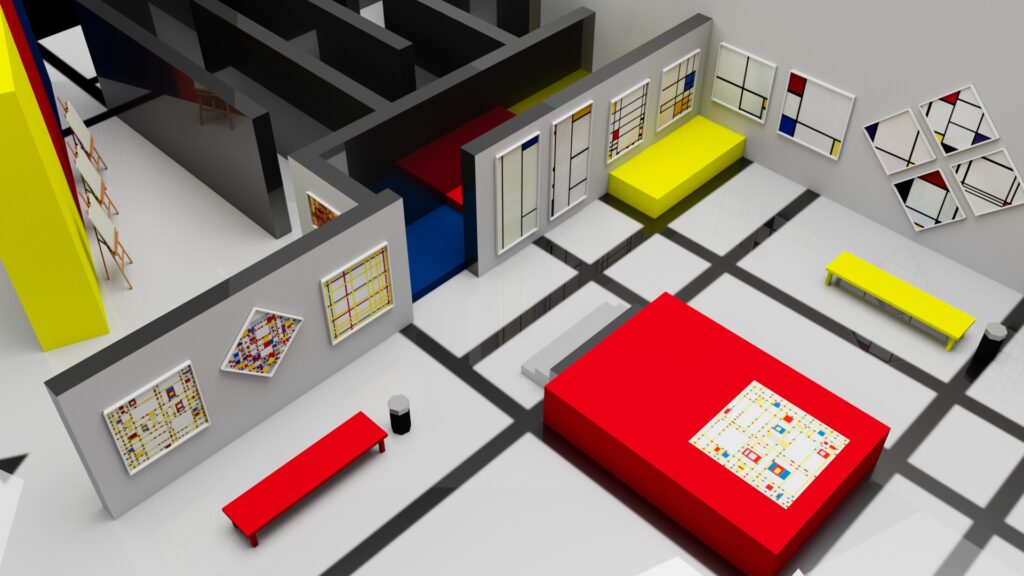
An artistic experience and attraction for the whole family A comprehensive branding project for an interactive Piet Mondrian exhibition in Israel, combining art, immersive experiences, and playful activities for children and adults. The project included visual identity development, concept creation, spatial design, marketing materials, merchandise, and digital assets.
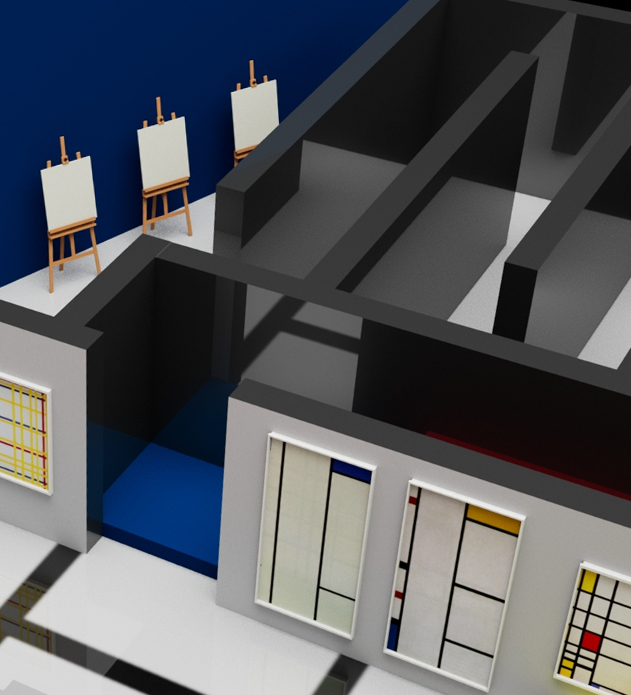
Over the years, I occasionally came across Mondrian’s iconic compositions without knowing much about them. When tasked with choosing an artist, I immediately revisited those memorable forms and colors, diving deep into Mondrian’s philosophy: “To approach the truth as closely as possible, I abstract everything until I arrive at the fundamental quality of objects.” Together with Bart Van Der Leck in 1915, Mondrian developed a new visual language based on primary colors, black lines, and geometric division.
Market research revealed around 200 museums in Israel hosting hundreds of exhibitions yearly, with most marketing done on social media or via ticketing partners. I chose to target the primary audience families seeking quality activities for their children.
I designed a logo reminiscent of Mondrian’s classic compositions rectangles and lines in black, red, blue, and yellow.
The goal was to instantly connect audiences to Mondrian’s values: order, balance, and precise color. The entire visual language relied on squares and playful color blocks inspired by his work.
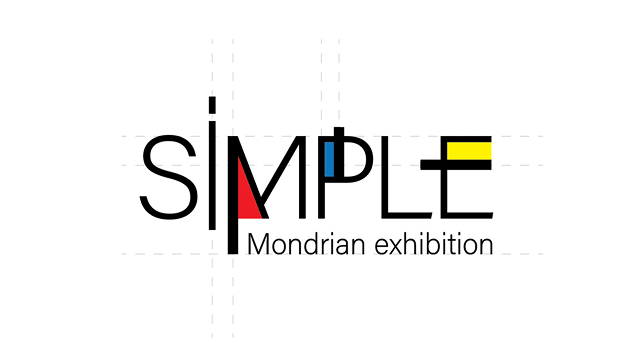
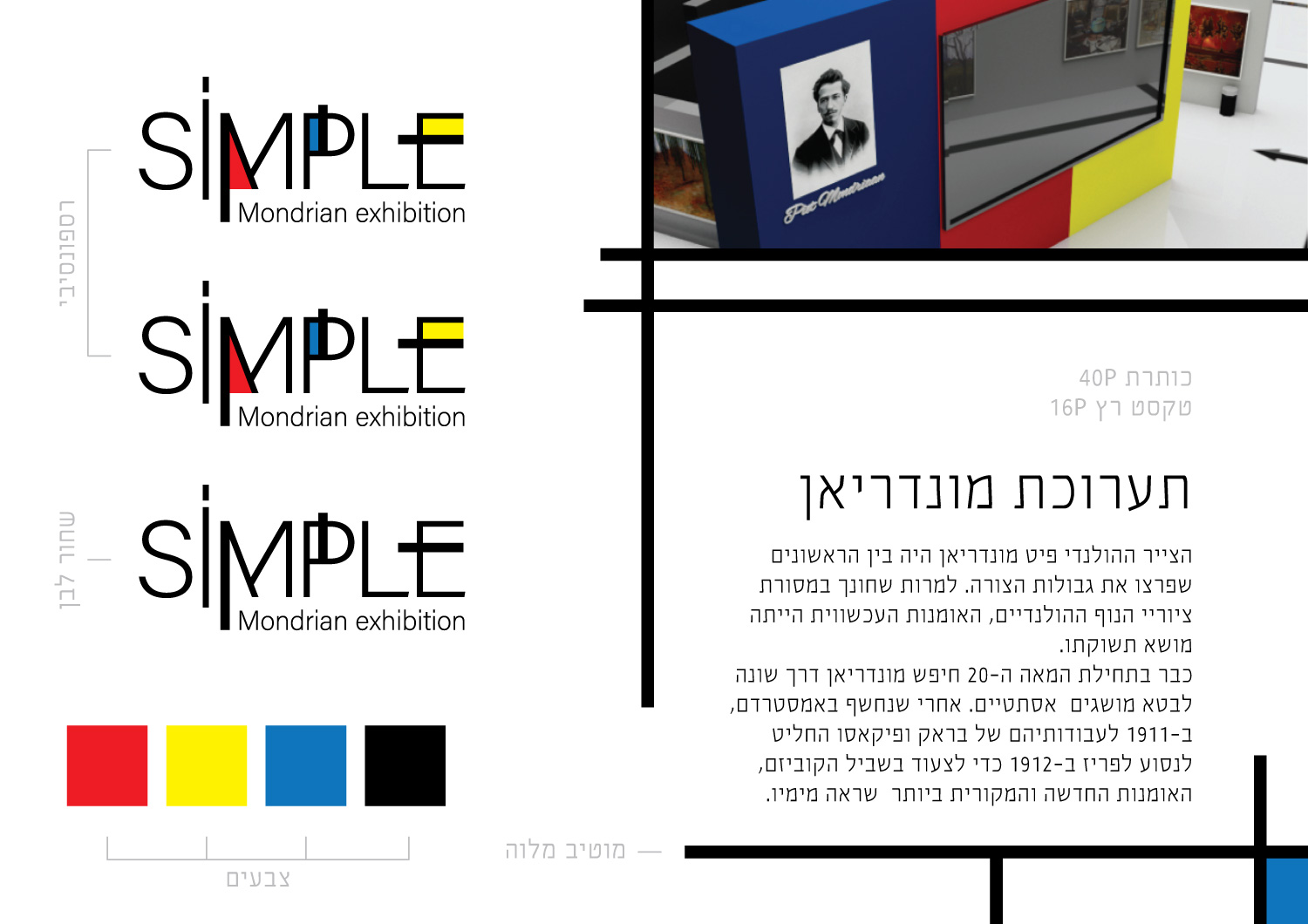
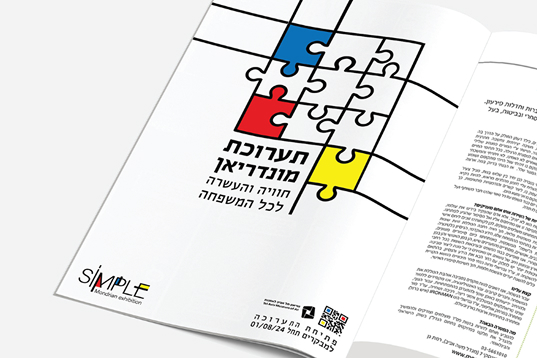
Each ad incorporated a game that echoed Mondrian’s style a maze with black lines and colorful squares, a tic-tac-toe grid in composition like aesthetics, and more.
The campaign spanned billboards, press and magazine ads, flyers, and posters in public spaces. This playful approach made art accessible and invited families to actively engage. It strengthened the exhibition’s identity as a joyful, memorable cultural experience.
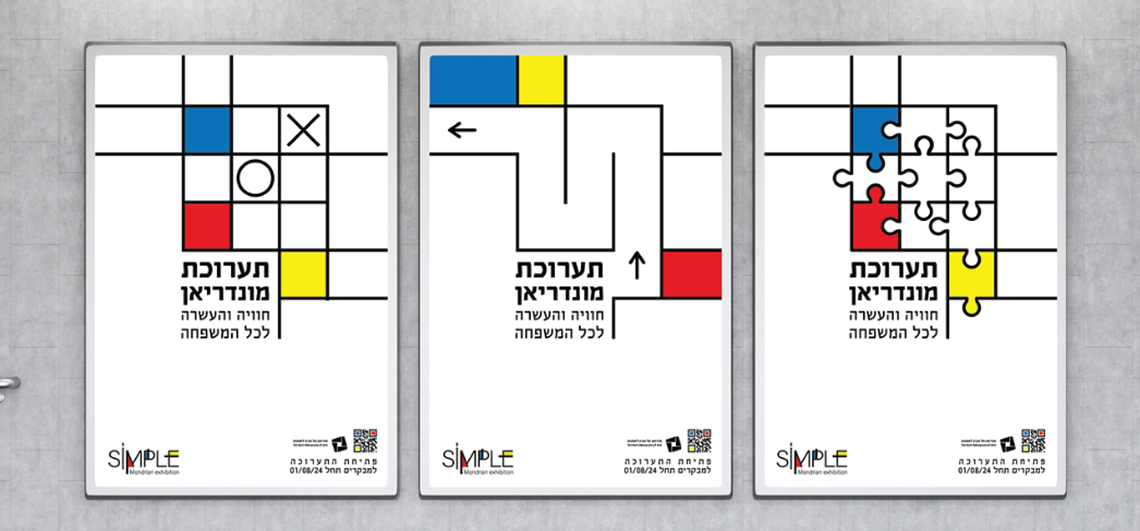
I produced shirts, mugs, bags, and flags featuring the exhibition logo. I even created a cake with a sliced cross-section revealing a colorful Mondrian-inspired grid a sweet experience that extended the story beyond the exhibition.
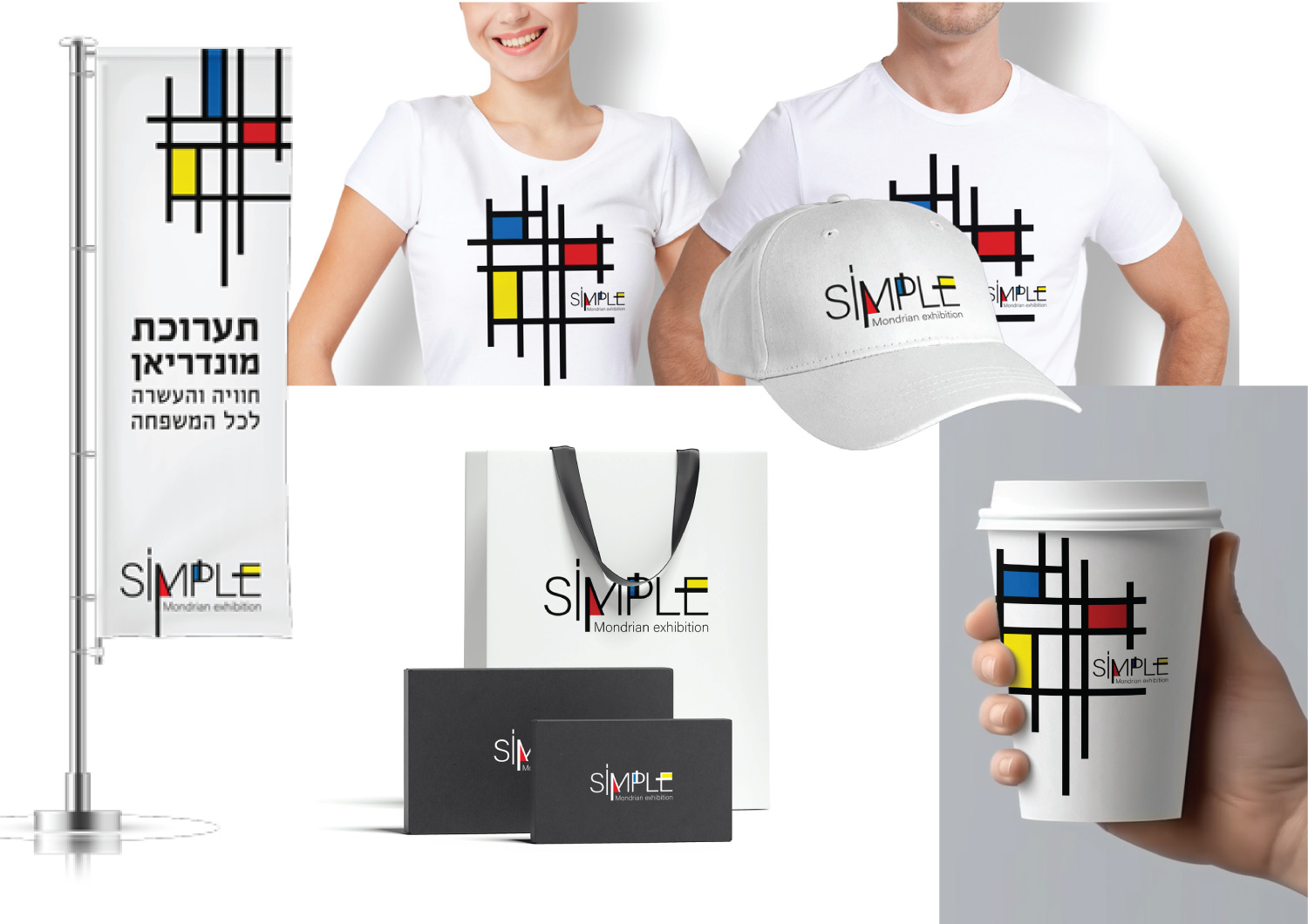

I built a 3D model of the exhibition space in Maya, accurately simulating the visitor’s path, interactive stands, and artwork placements This allowed a clear visualization of how guests would experience the space and the vibrant color interactions in a real environment.
